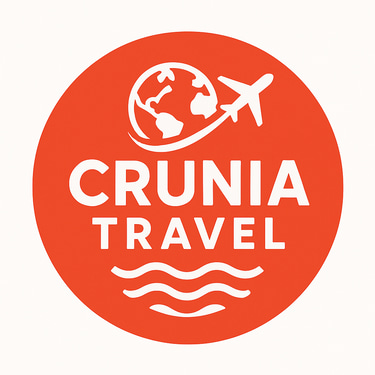From Anchovies to Altamira: A Cantabrian Road Trip Worth Getting Lost In
What happens when two curious friends trade city noise for coastal cliffs, Gothic churches, mountain passes, and smoky grilled anchovies? Northern Spain shows its wild and wondrous side in this unforgettable road trip across Cantabria.
21 ESCAPESSPAIN
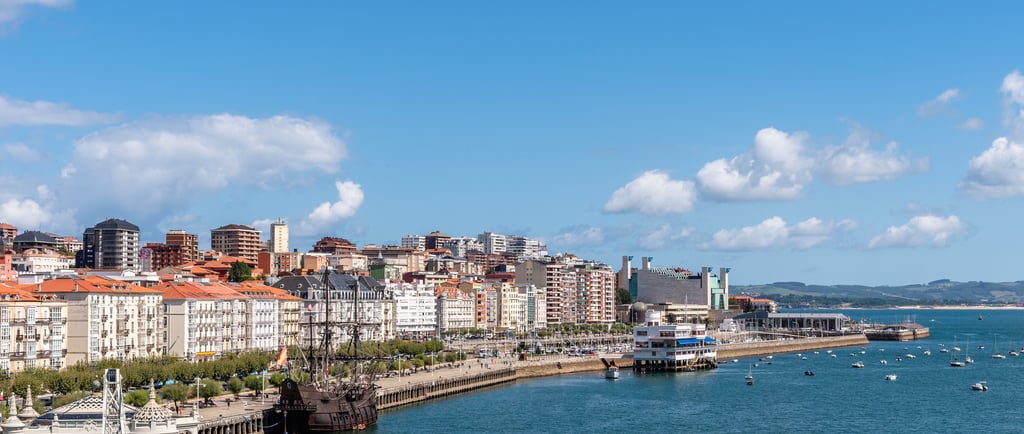

Day 1 – Touchdown in Santander: Salt Air and Slow Evenings
Out the plane window, the Cantabrian Sea shimmered grey-blue under a gauzy sky, and the land looked like someone had crumpled green velvet and laid it gently by the water’s edge.
The landing was smooth, but the breeze off the Cantabrian Sea hit me like a cold slap—bracing and oddly refreshing. We grabbed the rental car, barely big enough for our bags and legs, and drove off toward the center of Santander.
The streets felt calm. Not sleepy, but composed, elegant buildings with grand façades stood watch along wide boulevards, and locals strolled with that unhurried confidence of people who live near the sea.
Our first stop wasn’t planned. We pulled over near the Magdalena Peninsula, just to stretch our legs, and ended up wandering along the promenade. Below us, waves from the Cantabrian Sea rolled lazily onto golden sands. In the distance, the Palacio de la Magdalena stood like a scene from a period drama, watching over the bay with stately ease. The air smelled of seaweed and salt and something sweet—maybe fresh churros from a stand we never found.
By the time we reached Sardinero Beach, the city had already worked its quiet magic on us. This wasn’t the Spain of flamenco and flamethrower heat. This was clean sea breeze, cliffs draped in mist, and teenagers playing volleyball on the sand while older couples read books on benches facing the surf.
We checked into a small hotel perched on a hillside, Hotel Chiqui Santander, its balconies looking straight out over the water. Nothing fancy, and the sound of the sea drifting in through an open window.
That evening, we let the city lead us. No maps, no destination. Santander is a place that rewards curiosity and rewards it quickly. We found ourselves in the Mercado del Este, nibbling on skewered anchovies and sipping vermouth among locals who didn’t care what language we spoke, as long as we were eating well.
We wandered out of the market with the salt still on our lips and found ourselves pulled into a wood-and-tile tavern tucked on a side street. No menus, just the smell of garlic and the sizzle of oil. Bodega del Riojano, the sign read—old barrels lined the walls, and yellowed wine labels told stories of dinners long before ours.

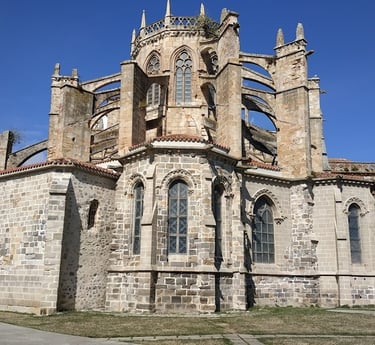
A waiter nodded us toward a small wooden table as if we’d been coming there for years. Rabas landed on the table with lemon wedges, crisp and golden, still crackling from the fryer. Then came the lamb chops served simply on a hot plate, kissed with sea salt and charred at the edges.
A local red filled our glasses while conversations buzzed around us—some soft and slow, others bursting with laughter and the clang of cutlery. We didn’t speak much either. That kind of meal asks for silence. You chew slowly. You smile often.
We woke to the sound of waves brushing against the rocks below our hotel window. The sea had changed color overnight, now a deep steel-blue, moody and restless. After a slow breakfast of coffee, toast, and homemade sobao pasiego so buttery it felt illegal, we packed up and hit the road.
The city faded quickly in the rearview mirror as we drove hugging the coastline where cliffs dipped sharply into the Cantabrian Sea. Every so often, the fog lifted just enough to reveal wild beaches and solitary fishermen perched on rocks, casting lines like ghosts.
Our first real stop was Comillas, a town that looks like someone dropped a Spanish fairy tale into the hills. We parked near the plaza and walked up toward El Capricho, Gaudí’s colorful little gem of a house. Turrets, ceramic sunflowers, iron balconies twisted into floral shapes… it felt like the architect had built it on a whim, mid-dream. The guard gave us a nod, and we took our time, wandering room to room under arched ceilings and stained glass.
Back in the town center, we paused for a coffee and some buttery quesada at a café with a view of the Pontifical University’s neo-Gothic towers looming like a movie set behind terracotta roofs. The sun peeked out just long enough for us to shed our jackets, sit in silence, and breathe it all in.
From there, we drifted toward San Vicente de la Barquera. The approach alone was worth the drive, an ancient stone bridge arched gracefully over the estuary, boats bobbing below, and the snow-capped Picos de Europa shimmering faintly in the distance like a painted backdrop. The town had that perfect blend of old and lived-in, not polished but proud.
We stopped at a place called Boga-Boga, sitting right on the edge of the estuary. No white linens, just plastic chairs and a sun-faded awning, and the smell of garlic and fish wafting through the open windows. The waiter leaned in and said, “Sorropotún. Fresh today. You’ll like it.” And we did. It arrived bubbling, red and golden, thick with potatoes and tuna, and warmed us like we’d just come in from the storm.
Afterward, we walked the harbor’s edge, watching kids race bicycles past weather-beaten boats, and climbed toward the Church of Santa María de los Ángeles, perched high above the town. The view stretched across the estuary, out toward the sea and back toward the jagged mountains. Everything was green, blue, and stone.
Someone at lunch had mentioned Oyambre Beach, a place locals go when they want space and sea. We took the tip. The road curved through tall grasses and low dunes until it opened onto a wild, empty stretch of coastline. We kicked off our shoes, walked straight into the wind, and let the sea spray coat our faces. There were no umbrellas, no sunbeds—just nature at full volume.
We stayed through golden hour, sitting on a driftwood log, watching the sky bleed into every shade of orange and violet. I don’t remember if we said much. Just two friends and the ocean, quietly soaking in a day that had felt like a dozen different stories in one.
By the time we made it back to Santander, it was late. We skipped dinner and opened a bottle of wine from a gas station just outside Comillas. We drank it on the balcony of our hotel, legs sore, clothes sandy, hearts full.
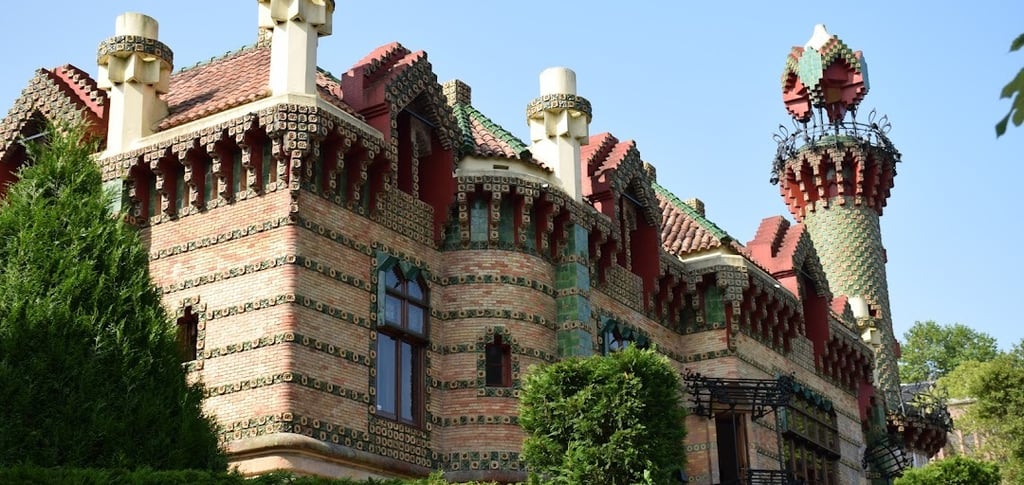

Day 2 – Coastal Wandering: Comillas, San Vicente, and a Sunset to Remember
We woke to the sound of waves brushing against the rocks below our hotel window. The sea had changed color overnight, now a deep steel-blue, moody and restless. After a slow breakfast of coffee, toast, and homemade sobao pasiego so buttery it felt illegal, we packed up and hit the road.
The city faded quickly in the rearview mirror as we drove hugging the coastline where cliffs dipped sharply into the Cantabrian Sea. Every so often, the fog lifted just enough to reveal wild beaches and solitary fishermen perched on rocks, casting lines like ghosts.
Our first real stop was Comillas, a town that looks like someone dropped a Spanish fairy tale into the hills. We parked near the plaza and walked up toward El Capricho, Gaudí’s colorful little gem of a house. Turrets, ceramic sunflowers, iron balconies twisted into floral shapes… it felt like the architect had built it on a whim, mid-dream. The guard gave us a nod, and we took our time, wandering room to room under arched ceilings and stained glass.
Back in the town center, we paused for a coffee and some buttery quesada at a café with a view of the Pontifical University’s neo-Gothic towers looming like a movie set behind terracotta roofs. The sun peeked out just long enough for us to shed our jackets, sit in silence, and breathe it all in.
From there, we drifted toward San Vicente de la Barquera. The approach alone was worth the drive, an ancient stone bridge arched gracefully over the estuary, boats bobbing below, and the snow-capped Picos de Europa shimmering faintly in the distance like a painted backdrop. The town had that perfect blend of old and lived-in, not polished but proud.
We stopped at a place called Boga-Boga, sitting right on the edge of the estuary. No white linens, just plastic chairs and a sun-faded awning, and the smell of garlic and fish wafting through the open windows. The waiter leaned in and said, “Sorropotún. Fresh today. You’ll like it.” And we did. It arrived bubbling, red and golden, thick with potatoes and tuna, and warmed us like we’d just come in from the storm.
Afterward, we walked the harbor’s edge, watching kids race bicycles past weather-beaten boats, and climbed toward the Church of Santa María de los Ángeles, perched high above the town. The view stretched across the estuary, out toward the sea and back toward the jagged mountains. Everything was green, blue, and stone.
Someone at lunch had mentioned Oyambre Beach, a place locals go when they want space and sea. We took the tip. The road curved through tall grasses and low dunes until it opened onto a wild, empty stretch of coastline. We kicked off our shoes, walked straight into the wind, and let the sea spray coat our faces. There were no umbrellas, no sunbeds—just nature at full volume.
We stayed through golden hour, sitting on a driftwood log, watching the sky bleed into every shade of orange and violet. I don’t remember if we said much. Just two friends and the ocean, quietly soaking in a day that had felt like a dozen different stories in one.
By the time we made it back to Santander, it was late. We skipped dinner and opened a bottle of wine from a gas station just outside Comillas. We drank it on the balcony of our hotel, legs sore, clothes sandy, hearts full.
Day 3 – Into the Peaks: Potes, Orujo, and the Echo of Mountains
We left the sea behind with one last glance at the estuary, mist curling above the water like it didn’t want to let go. The road twisted inland, trading waves for walls of stone. Our tiny car grumbled through the gears as we climbed into the Hermida Gorge, a narrow passage carved by centuries of water and wind.
Cliffs rose up like giants on either side, draped in moss and shadow. The road clung to the side of the mountain, barely wide enough for us and the occasional delivery truck barreling around a bend. We kept the windows down, letting in the scent of damp rock, pine needles, and woodsmoke from a distant chimney.
By late morning, we rolled into Potes—a small town folded between mountains like a secret whispered to the earth. Stone bridges crossed a trickling river, and the buildings leaned into each other with centuries of weight and weather behind them. It felt like stepping into a postcard, except it was very much alive.
The town was buzzing with that Sunday-in-the-north energy—market stalls selling sausages and honey, kids weaving through alleys, and the faint sound of a radio playing boleros somewhere above the plaza. We parked, walked with no direction, and found ourselves at the heart of it all—Plaza del Capitán Palacios, wrapped in arcades and draped in colorful flags.
A chalkboard menu outside a tavern offered cocido lebaniego, and that was enough for us. We stepped inside, sat near the fireplace, and waited. What arrived was a feast: garbanzos stewed with cabbage, morcilla, and pork belly, followed by tender meat and a rich broth to sip at the end. It was a dish made for mountain life—hearty, slow, and meant to be eaten like you had nowhere else to be.
The waiter brought us two tiny glasses of orujo, the local firewater, on the house. We toasted with a wince and drank it anyway. “Burns like regret, but in a good way.”
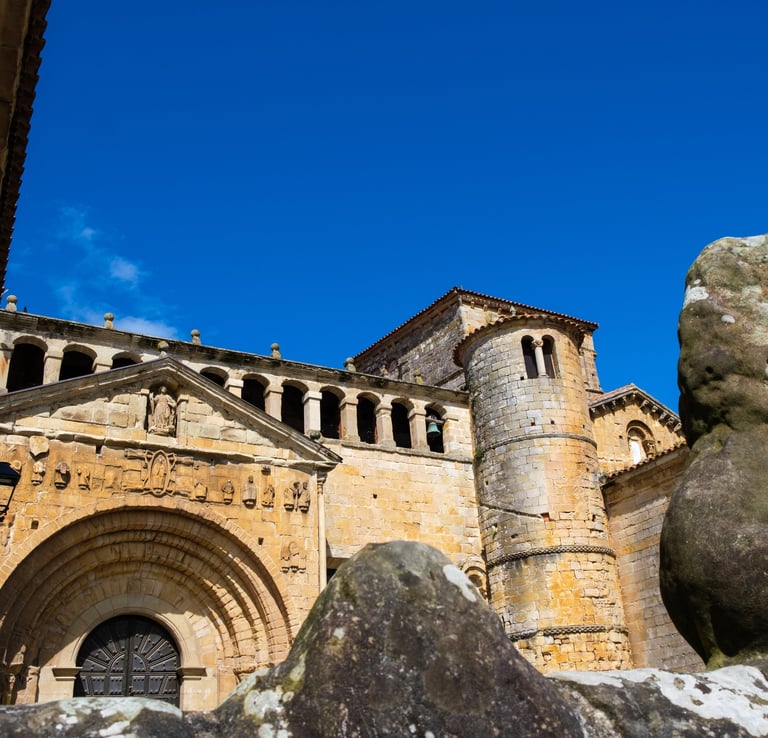


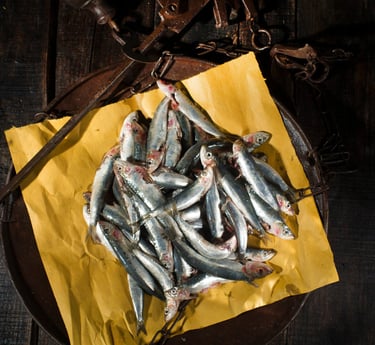
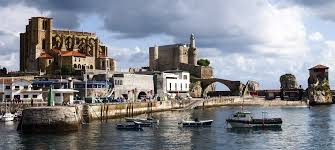

That afternoon, we drove higher into the Picos de Europa, chasing clouds toward Fuente Dé. The cable car wasn’t running—too much wind—but just standing beneath the cirque, with its jagged edges cutting into the sky, was enough. We hiked a short trail past a herd of grazing cows, their bells echoing like wind chimes. It was quiet. Holy, almost.
By sunset, we circled back to our stay for the night: Casa Redondo – Rural Guesthouse.
A beautifully restored stone house with mountain views, thick wooden beams, and a fire in the hearth. Run by a kind couple who grow their own herbs and make their own jam. Quiet, personal, and deeply Cantabrian.
We were welcomed with a smile, handed a bottle of local wine and a small wooden tray with cheese and pan sobao. The smell of burning oak from the fireplace crept into our room and wrapped itself around the evening like a wool blanket.
Outside, the night sky was impossibly clear. We sat under it with our glasses, watching the silhouettes of the mountains rise like giants in the dark.
Day 4 – Caves, Cobblestones, and a Village That Time Forgot
We left the mountains reluctantly, our bags smelling faintly of woodsmoke and clean air. Driving out of Potes felt like slipping out of a dream. But the road ahead promised something different—a journey not upward this time, but inward, into history.
The landscape softened as we drove toward Santillana del Mar, with rolling green hills and low stone walls slicing the fields into uneven squares. On the way, we made a stop that felt almost obligatory but ended up becoming one of the most humbling moments of the trip.
Just outside Santillana is the Museo de Altamira, home to one of the most important archaeological finds in Europe. The real cave, with its Paleolithic paintings, is protected and rarely accessible. But the Neocueva, a full-scale replica just meters away captures every inch of the original.
We stood under red-and-black bison painted more than 36,000 years ago, their forms bulging from the rock like they were still moving through the flickering firelight of a prehistoric camp. No glass. No velvet rope. Just us, the bison, and silence.
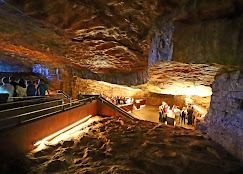

From there, we coasted into Santillana del Mar, proudly known as the town of “three lies”—it’s not holy (santa), not flat (llana), and definitely not by the sea (mar). But what it is… is stunning. We parked just outside the stone gate and walked in, shoes clicking over cobbled streets polished smooth by centuries.
Shutters hung low over stone archways, and flower pots dripped with color from ancient balconies. A horse-drawn cart passed by slowly, as if it knew we were all just visitors in this town’s long, quiet story.
We stopped for a slow lunch at El Pasaje de Los Nobles, a beautiful, rustic restaurant with wooden floors and a fireplace, tucked inside a 17th-century noble house. Local specialties like quesada pasiega, cabra cheese, and slow-cooked beef stew.
We ordered regional cheese to start, followed by melt-in-your-mouth beef cheeks in red wine, and a slice of quesada so rich and lemony it felt like dessert and breakfast all in one.
By afternoon, the streets were quieter. Daytrippers gone. Shops closing their shutters. The town slipped into that soft northern stillness again, as if exhaling.
We could’ve gone straight back to Santander then. But a hand-drawn arrow on a roadside sign caught our attention as we headed out of town: “Bárcena Mayor – pueblo histórico.” No distance. No details. Just an invitation. We took it.
The road narrowed as it climbed, curling between forests thick with chestnuts and oaks.
A village hidden in the Saja-Besaya Natural Park, untouched by modern noise. No neon. No traffic. Just stone houses with wooden balconies, slate roofs, and blooming geraniums spilling from every windowsill.
We parked at the edge and walked in. It was like stepping through a crack in time. A woman swept her doorstep. A dog watched us from behind a fence. Somewhere, a pan clinked on a stovetop. The smell of smoke and stew filled the air.
There were no crowds. No curated charm. Just real life, as it has been for generations.
We sat at the one bar still open and ordered two beers. No snacks. No music. No Wi-Fi. It was perfect.
That night, we returned to Santander, rolling in under a canopy of stars. Tired in the way that only good travel makes you—legs sore, camera forgotten, hearts full of places we never meant to find.
We slept with the window open again, and the sea—the Cantabrian Sea—sang us back into dream.
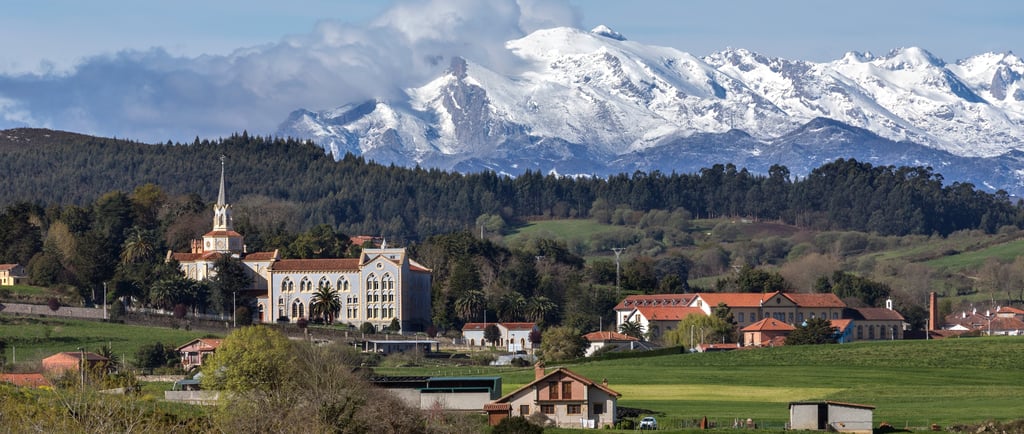

Day 5 – A Final Coastline, Castro Urdiales, and the Taste of Goodbye
The last morning came too soon. Santander was still asleep when we rolled out of the hotel, the streets bathed in the soft silver light that belongs only to early risers and fishermen. We didn’t speak much—both of us carrying that quiet weight of knowing something was ending.
Instead of heading to the airport just yet, we took one last detour. One last stretch of Cantabrian coast.
The drive to Castro Urdiales took less than an hour, but we stretched it out, winding past green hills and glimpses of the sea, villages tucked into valleys like forgotten postcards.
When we pulled into Castro, the town was just beginning to stir. The harbor reflected the soft colors of a cloudy morning. Fishing boats rocked gently in place, and seagulls hovered overhead with the same confidence as the locals on their way to cafés.
The town with its Gothic church clinging to the rocky coastline, a medieval castle beside it, and the lighthouse peering out over the open sea like it had stories we’d never hear. We walked out to the Santa María de la Asunción church, perched high above the town, and looked out over the water.
We made our way to the marina and found a table outside at Mesón Marinero, where the servers moved like they knew everyone and the menu was written in chalk and changed with the tide. A local red mullet had just come in—grilled whole, drizzled with olive oil and garlic, served beside roasted peppers and a wedge of lemon. We picked it apart slowly, watching the boats sway and the sun slip behind the tower of the old church.
We didn’t rush. We didn’t plan. We just let the meal stretch, like we were trying to hold onto the moment with our forks.
By mid-afternoon, it was time. We took the longer route back to Santander, avoiding the highway, dipping in and out of valleys and villages.
Cantabria had surprised us. Not with spectacle, but with soul. With its quiet cliffs and ancient streets, with orujo and anchovies, misty peaks and hidden villages. It doesn’t shout for attention—it waits, gently, for those willing to look.
We came with a map. We left with a story.
Crunia Travel
Customized travel experiences await you.
Get in touch
hello@cruniatravel.com
+1 754 457 2624
© 2025. All rights reserved.
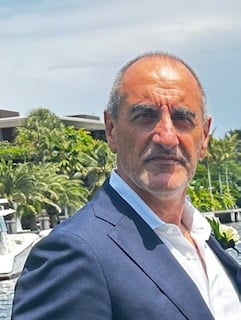

admin@cruniallc.com
